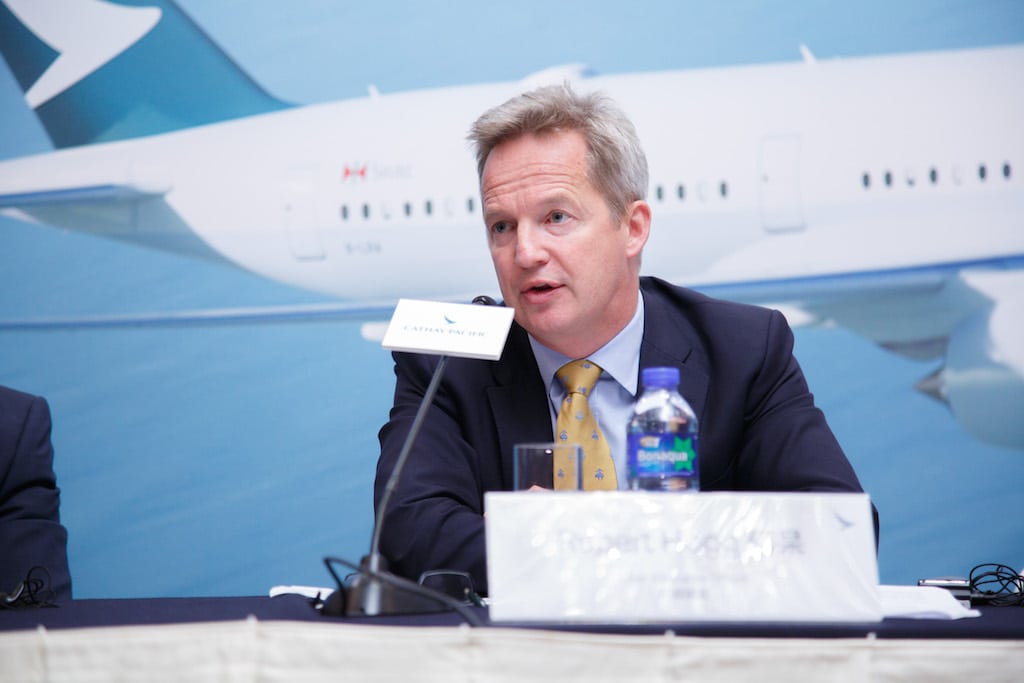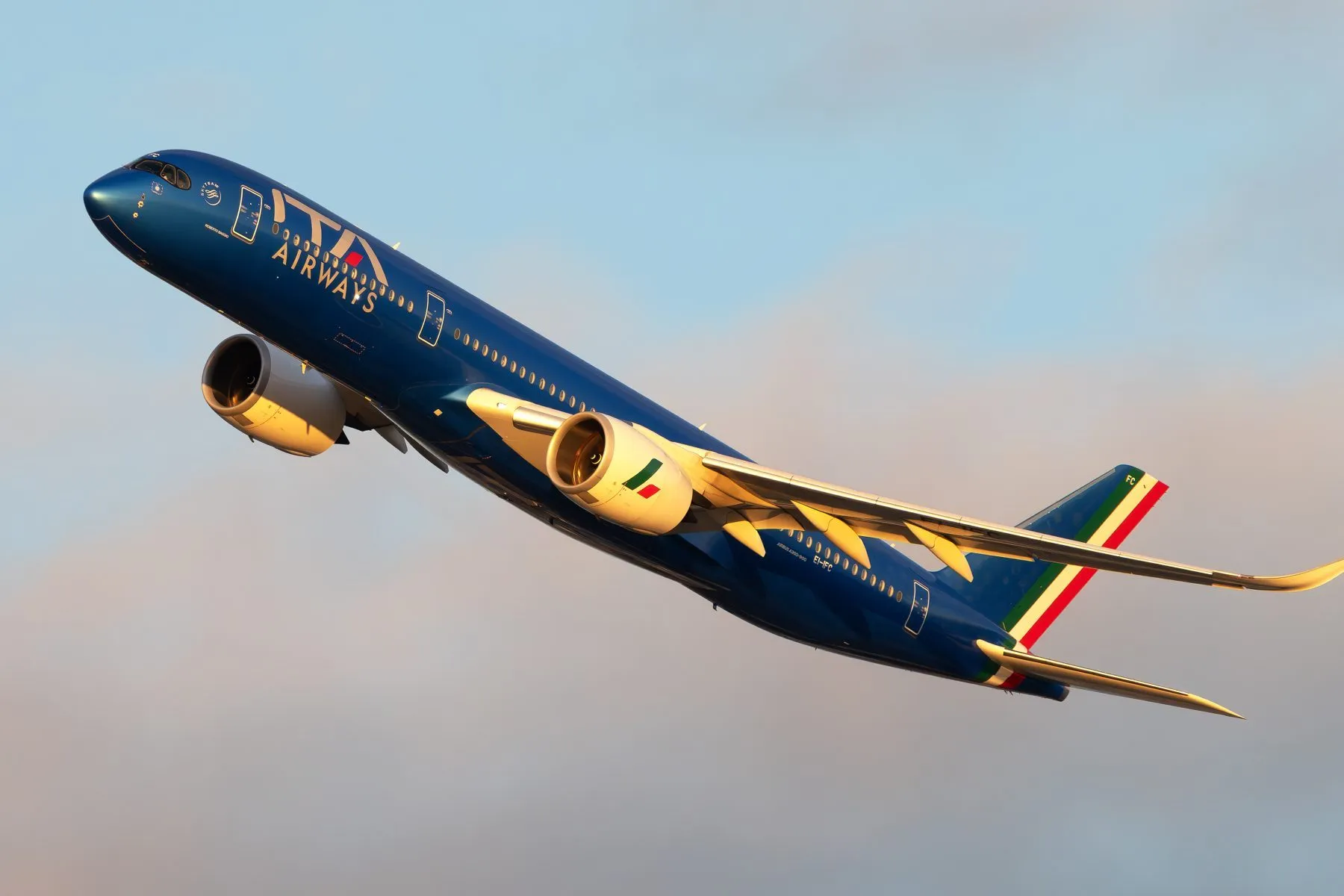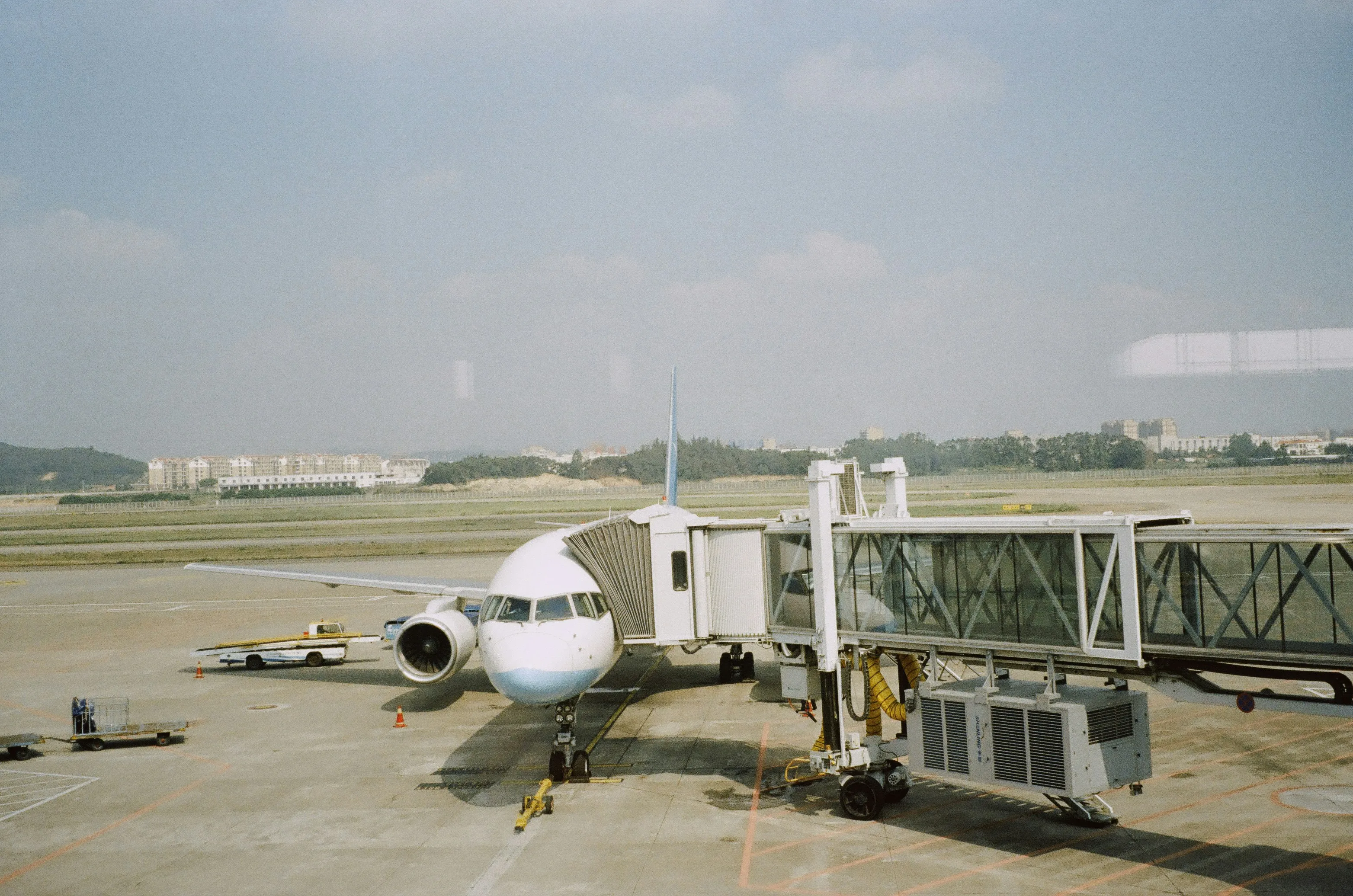Why Cathay Pacific Wants to Take On Low-Cost Carriers Without Creating Its Own

Skift Take
Few airlines in the Asia region have such a strong brand as Cathay Pacific, the more than 70-year-old Hong Kong-based carrier known for its onboard service, comfortable seating, and opulent lounges. But in recent years, it has lost some of its luster, both because of poor financial decisions, and an inability to adapt to new customer preferences.
Last year, in the middle of what would become the airline's first back-to-back annual losses in its history, the airline named Rupert Hogg, who joined carrier's parent company in 1986, as chief executive. Hogg is guiding a three-year turnaround program, the airline's first restructuring in two decades, as the carrier cuts staff and delays some aircraft orders.
A little more than a year into the program, Hogg has made some strides, even though Cathay Pacific lost roughly $160 million last year. Still, the company's stock is up 24 percent since October, 2016, and Hogg said he is optimistic the airline can make a profit next year.
This is partly because Cathay has become more sophisticated with its fuel hedging strategy, after losing an estimated $822 million in 2017 from mistimed hedges. But it's also more nimble, with fewer employees, and it has benefited from an improvement in the air cargo business and in business class demand.
Still, there's more to be done. Cathay not only must contend with low-cost carriers, both short haul and long haul, but it also must compete with mainland Chinese airlines, which often undercut it on price. In addition, it needs to overhaul its digital strategy, a challenge for an airline that always has been lauded for its face-to-face service.
We spoke recently with Hogg at the IATA Annual General Meeting in Sydney, an important airline conference, to learn more about the carrier's future.
Note: This interview has been edited for length and clarity.
Skift: You're in a turnaround effort. How is it progressing?
Hogg: We're on track. We started the program a year ago. In large part, it was a response to the reality that the market that we find ourselves in had a structural change. And that structural change came in the form of more competition — in some cases, better competition than there had been before — and rapidly growing capacity coming from that competition. What that meant is that there was a lot of capacity chasing a growing market but growing in excess of the market. That had a big impact on the yield from the passenger side — two years of negative revenue growth. Last year was negative revenue growth again, so clearly it was time to look at ourselves, look at the future, and say, 'What do we need to do to compete and win?' That's the backdrop to the transformation program. We said by 2019, we want to turn above our cost of capital because that implies making a profit.
Skift: How will you do it?
Hogg: There's still a lot to do, and there's no silver bullet. On the revenue side, we've got two broad objectives. One is to really understand our customers better with much better insight. We've always had a service oriented culture but we want to really understand [customers], and then invest much more accurately in the things that they value to make life more convenient for them. And the other is to find new sources of revenue. That includes new markets and serving new traffic flows. We'll open [new] destinations, so we're doing nine destinations this year. We'll add three in Europe.
Skift: So growth is a major part of the strategy?
Hogg: We have a plan to grow at about by 4 percent to 5 percent between now and the commissioning of the third runway in Hong Kong, which is late 2024. And that's fueled by growth in new aircraft. We've got 80 new aircraft coming — roughly one a month until that point.
New destinations will play a part. We already serve 105 destinations nonstop and Hong Kong is already a super-connecting hub. You'll see increases in frequency. You'll see us upgauging, putting bigger aircraft on popular flights where both ends are congested and there are slot opportunities. It'll be a combination of a whole bunch of things.
Skift: You've lost a lot of money hedging fuel. But you're still doing it, unlike major U.S. airlines, many of which have given up hedging. Why?
Hogg: We are committed to a hedging strategy, but we've changed our strategy. We've said that we will only hedge out for a period of two years. We'll never be more hedged than 50 percent of our exposure in terms of our consumption. We are quite comfortable with that decision. You can debate hedging from one extreme to the other. The majority of airlines, particularly independent airlines, hedge. Our board wants a risk management profile that provides some sort of protection from rapidly rising fuel prices
Skift: Many airlines are starting low-cost carriers. Would you?
Hogg: I think we're approaching a sort of binary fool's choice between low-cost carriers and what we call premium or legacy carriers because you see it's a hybridization going on. So definitely there is a price symmetry end of the market, isn't there? And I think the low-cost-carrier model has proven that to be the case.
I think that travel patterns, and travel consumer needs and preferences are changing too. I'll give you a simplistic example. When I first came to Hong Kong, people were traveling on work, and they might do one month on holiday particularly visiting friends and relatives and then [travel] on Chinese New Year going to Taiwan or something like that.
Now, in Hong Kong — and this is not just millennials — all sorts of people are traveling weekends and traveling with real frequency throughout the year. And they're going on food tours, and golf tours, and to K-Pop concerts and stuff like that. Now, no matter how much affluence they have, when they're doing that for a weekend, they want a good deal on the flight, and they want to spend their money on what it is they're going to do.
I think carriers like us will always want to be in that market and to have keen prices. But we're wide-bodied with a lot of seats in the economy class and the marginal cost of production over a three-hour sector is quite low. You can have a full range of fares.
We are not set on sticking with just what we've got forever. We'll watch and see how that might suit. But there is a reality for us, which is that our airport is essentially full. If you were to start second carrier under any model or a new brand it would be very difficult anyway until there's more capacity.
Skift: We've heard a lot recently about a future where 20-hour flights are common. Some could overfly your hub. Does it concern you?
Hogg: There's a real danger of thinking in terms of a zero sum game. I remember when I first came into marketing a few years ago. People were looking at 110 million international passengers coming out of China and traveling beyond greater China. This year we're looking at about 150 million. I think there is real growth in the markets. And when you consider the size of some of the populations in Asia, I think there is great potential.
Is [the future] going to be point-to-point so it takes traffic away from the hubs? Well, it's bound to take some traffic away from hubs. But is there going to be growth in demand for both? I think, unquestionably, yes. And when I look forward, I see forecasts like two and a half billion additional passenger sectors between now and 2030. To me, the issue is going to be, how are those passengers going to travel, and is the infrastructure going to keep up?
Having said that, there will be people that [prefer] the convenience of point to point. I actually think that there will still be people willing to pay a premium to fly in the front end of aircraft, but will want to stop in the middle of it.
Skift: You had a better than expected last year in part because cargo has bounced back. How's the cargo business now?
Hogg: Cargo has been strong. There are two or three factors. I think the world economy is quite benign, so people are feeling a bit more confident and have been spending, and a lot of what leaves, particularly out of China, is consumer electronics and things people buy. That's the first.
Second, there is definitely a base being built up by online shopping. China's no exception to that trend. It's a leader of that retail model, and that requires a whole lot of [transport] that didn't exist before.
The third thing for us is that, traditionally, there was always a very big imbalance outbound from China and Asia [versus] inbound. That imbalance is beginning to level out mainly as wealthy parts of China become more consumer-driven in terms of the economic model. We're seeing more product coming in as well, so cargo has been strong. No doubt, we don't stimulate demand in cargo. It's a reflection of how people feel, and wha the underlying macroeconomic world is like. And that can turn in six months.
Skift: Do you fear trade disputes?
Hogg: There's a difference between sentiment and what's actually happening on the ground, and one might lag the other, I completely accept that. But most of the stuff that we are moving is consumer electronics, garments, perishables, etc. The center of a trade dispute in the rhetoric for the moment seems to be around things like cars and aluminum, and steel. No trade war is a lot better than a trade war, but we don't yet see the evidence coming through that air cargo could be affected.




